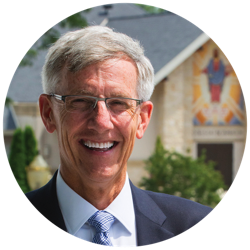If you were one of the 12 Apostles, would you be proud hosting Jesus for a visit to the campus of your college choice?
As you reflect upon the Catholic colleges and universities you are considering, my Collins College Report Card tool offers my ACE framework for your use during the search process: Alignment, Culture, and Engagement with the Christian tradition. The framework is intended to help you identify and prioritize what you can observe as factoids that will be critical to the final institutional selection. This posting offers you an expanded definition of what I mean by “culture” within the Alignment-Culture-Engagement framework.
Since we have a 900-year old tradition in higher education that is built upon a 2,000-year old intellectual tradition, I begin again with history. St. Ignatius of Antioch, early in the 2nd century, first used the term “Catholic” to denote the universal Church established by Jesus Christ. Over the centuries, what has developed is a Catholic culture…a way of life that is comprised of the set of beliefs as exhibited in various practices that are aligned with the teachings of the Catholic Church.
Avery Cardinal Dulles offered his explanation of culture as what “we normally understand a system of meaning and values, historically transmitted, embodied in symbols, and instilled into the members of a sociological group so that they are spontaneously inclined to feel, think, judge, and behave in certain ways.” It is important to remember that this way of life is not constructed by individual choice, contrary to modern day thinking, but rather it follows from being a disciple of Christ. If everything were up to individual choice, then who is to say who or what is “right” with the various choices? How do we find peace if we all disagree? We know from our family life, our athletic endeavors, and our educational experiences that there is never harmony when we all disagree. The Catholic tradition recognizes that there is a way to bring us all to a common place, and that this cultural way of living is exhibited conceptually in community.
Central to understanding Catholic culture is the notion of community—a community “called into being by Jesus Christ himself.” Community has always been fundamental to the Catholic culture in America. As an immigrant Church in the history of the United States, the witnessing of the Catholic culture has been through the window of daily life in the ethnic neighborhoods of the German, Polish, Irish, and Italian Catholic communities, for example. The Catholic culture within these earliest American communities represented their attitudes and habits as well as their beliefs lived out through their inherited customs and traditions. This sense of community extends beyond the family. It is also central to the Catholic notion of education as a means for fostering the convergence of faith and life. Community is at the heart of Catholic higher education.
The Catholic culture, then, is exhibited in the actions and judgments within a community seeking to be in union with the teachings of the Catholic Church. Catholicism is a term of art often applied to a community that “denotes the system of teachings, doctrine, and practices of the Roman Catholic Church.” Some have referred to this simply as a “way of viewing the world.”
Thus, a Catholic college campus has historically been a community of faculty, staff, and students oriented on witnessing to their faith as they are simultaneously engaged in the development—physical, spiritual, and intellectual—of young men and women. However, the manner with which this is accomplished does vary. And that is okay!
Since its inception, Catholicism has reflected both global and local traditions. It is the Catholic awareness, not universal mandates, that marks a culture that is attuned to the tenents of the faith while engaging with the world. On the campus of a Catholic college or university that is coupled to the teachings of the Church, a Catholic culture should guide all aspects of campus life, from administrative decision making to curricular and co-curricular activities and the formation of students. These research data suggests that an active Catholic culture that permeates campus life can contribute to the successful achievement of the institutional mission.
Here is the question for your search: Is the culture at the school Catholic?
How can you tell? Easily. As you look at the website, the marketing materials, and on your campus visit you should “see” images and symbols of Catholicism. The purpose of the institution should have a connection to your development intellectually, morally, and spiritually. Service to the community, especially the underprivileged or those in distress, should be obvious. The school’s calendar might reflect the liturgical rhythm of the Church. Listen to the language…can you hear the voice of Christ in how the students, staff, and faculty speak? Take note of the social causes that are advertised, promoted, and pursued on campus.
There are plenty of other examples…to which I summarize as the second 5 of the 15 signal features (Witness Campus Sacramental Participation in the Community) that emerged from my research and are in the Collins College Report Card. This is the “stuff” that makes up the environment.
The “culture” is the glue-ware that creates the environment you will eat, sleep, study and play in for the next several years. With alignment we concluded by noting the school needs to “walk the talk.” The school also has to create and maintain an environment that encourages scholarship while affirming discipleship…modeling the way for the community.
Jesus will want to see both during his campus visit with you.

